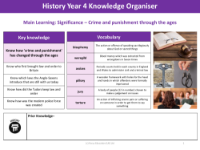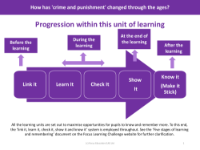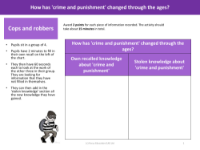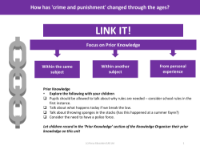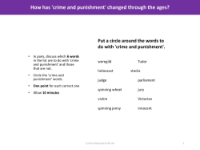Long-term overview - Crime and Punishment - Year 4

History Resource Description
The Year 4 curriculum for History presents a comprehensive exploration into the evolution of 'crime and punishment' throughout British history, from the Stone Age to the present day. Pupils are expected to develop a secure understanding of the British timeline, enabling them to narrate events within and across various historical periods. They will delve into chronology and causation, learning to describe connections, contrasts, and trends over time. A key aspect of their disciplinary knowledge involves mastering the use of dates and terminology to accurately describe historical events, and to understand the main changes in crime and punishment during specific times.
Through historical enquiry, students will distinguish between primary and secondary sources, using both to gather information about the past. They'll construct informed responses, particularly focusing on how the concept of crime and punishment has transformed over the ages. Interpretation and significance are also central to the curriculum, with pupils examining multiple accounts of historical events to identify differences and understand the reasons behind these variations. They will consider the impact of past actions on contemporary life, discussing similarities and differences between various periods. Questions such as "Who first brought law and order to Britain?" and "Which Anglo-Saxon laws are still relevant today?" will guide their inquiry into how law and order function in Britain now, the evidence of past cruel punishments, and the fairness of historical justice systems. This long-term overview aims to foster a deep and reflective understanding of the historical progression of legal systems and their enforcement in Britain.

